Are you new to sourdough baking or have questions about maintaining your sourdough starter? Here's all you need to know about how to feed sourdough starter and how to tell when it's ready to bake with. Plus, ideas for what you can do with your unfed sourdough starter discard.
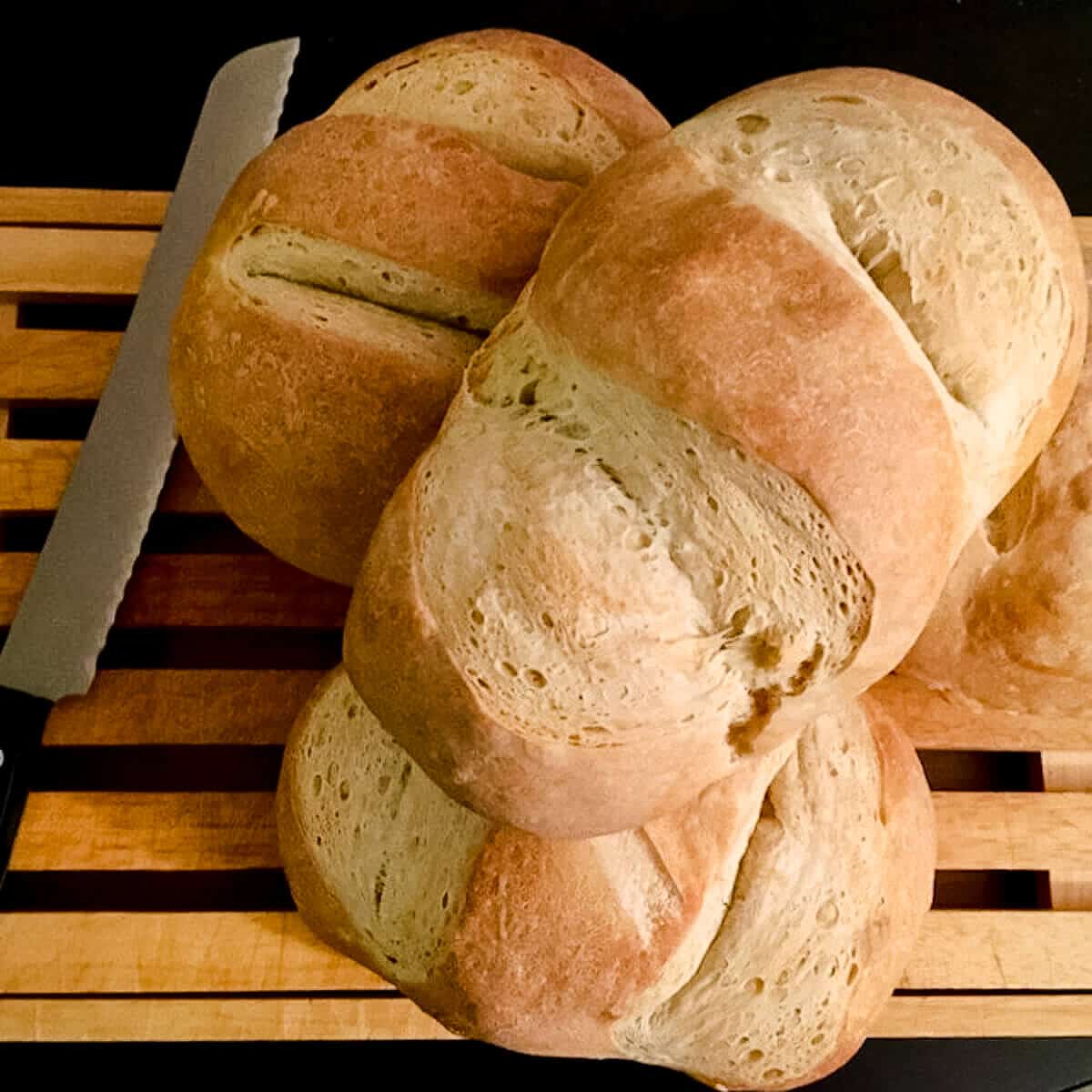
Jump to:
- Why these instructions work
- What is sourdough starter?
- Recipe ingredients
- Measure your ingredients carefully
- Sourdough starter feeding schedule
- How to feed sourdough starter
- What to do with sourdough starter discard
- Further reading about sourdough
- Questions asked and answered
- More recipes featuring sourdough discard to try
- Good news for sourdough bakers!
- Recipe
- Comments
Why these instructions work
- Complete step-by-step instructions on how to feed sourdough starter
- Ideas for what to do with the sourdough starter discard
So you've decided to start baking sourdough bread. Welcome to the dark side! We have cookies...and Sourdough Gingerbread.
You might be wondering what exactly you've gotten yourself into? Maybe you've heard the term "sourdough starter discard" and have wondered what that meant.
Or perhaps you've heard about the need to "feed your starter." What, like a baby?
In a word, yes.
I've been maintaining sourdough starter for years, and I'm here to give you an easy-to-follow guide to caring for your sourdough starter. Let's have at it, shall we?
⭐⭐⭐⭐⭐
Thank you for keeping it simple
- Sally
What is sourdough starter?
Any story about sourdough has to...uhm...start with yeast. They're a living organism that occurs naturally in the environment. While the commercial yeast you buy in the store (i.e., baker’s yeast) has been “domesticated,” yeast in the wild varies by location.
Long ago people learned to capture the yeast and nurture it, feeding it flour and water to create a bubbly living starter, and then used bits of that starter in their bread. It's actually not far from how beer was first brewed, but that's a different story.
If you want to bake bread without commercial yeast, you'll need to use the wild yeast in a living sourdough starter.
The tangy character of sourdough bread comes from the yeast that had been captured from the local environment at a point in time. Some sourdough starters available today are descended from a starter more than a century old.
And as that starter is fed and used, it adapts itself to the local region and climate, creating a bread that is unique. That’s the reason San Francisco sourdough bread is so distinctive.
Recipe ingredients
A sourdough starter is really just a colony of wild yeast that feeds on mixture of flour and water. Here's what you need:
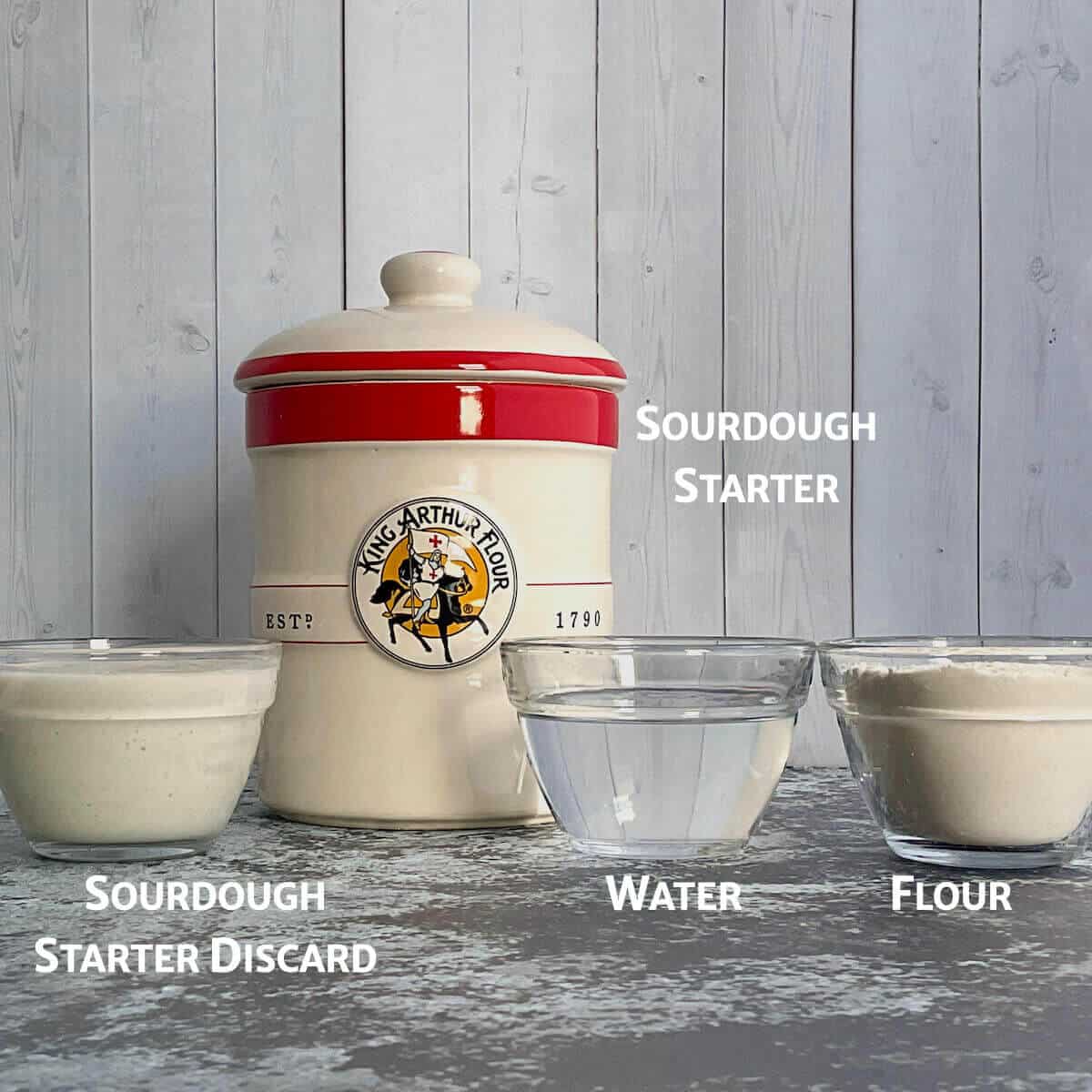
Ingredient Notes
Flour: You can use different types of flours for different types of starter. I use an unbleached all-purpose flour to maintain my starter. You can also use whole wheat flour, rye flour, bread flour, etc, as your flour of choice. Just be consistent and use the same type each time, if possible.
Wheat flour is rated by the percentage of protein it contains - the higher the protein level, the "stronger" the flour. It’s important to use the right flour with the proper protein content for your recipe.
Bread flour has a high protein level (between 12% to 14%) needed to create the gluten structure for bread. Cake flour has the lowest protein level (7% to 8%) so cakes will come out soft (pastry flour is just above that at 8% to 9%). Most all-purpose flours have a range of 9% to 12% protein, which is why they're good for many different types of baking.
For the purposes of maintaining sourdough starter, all-purpose flour is fine.
Water: Most sourdough starters have a 1 : 1 recipe ratio of flour and water by weight. In other words, it's 50% flour and 50% water. You can also say that the flour has a 100% hydration level.
I say "most" because you can have different hydration levels in a starter based on baker preference or the characteristics of the flour itself.
Since my sourdough starter has that 1 to 1 ratio, that's what I'm going to stick to for the purposes of this discussion. Your mileage may vary.
See the recipe card for a full list of ingredients and measurements.
Measure your ingredients carefully
Please note the emphasis on the words by weight when I talked about what sourdough starter is. If you were to mix one cup of flour and one cup of water, you'd have a much different ratio.
Why? Because a cup of flour weighs 120 grams (about 4¼ ounces), while a cup of water weights 227 grams (8 ounces). So that volume measurement of flour to water would be closer to 1 to 2 flour to water, or a hydration level of 53%. That changes things significantly!
The best thing to do is to get yourself a kitchen scale. I use mine constantly. It’s much more accurate than using volume measurements because the weight of one person’s lightly sifted cup of flour can differ significantly from another’s packed cup of flour.
It's also helpful to have a digital thermometer to check the water temperature before you go adding it to the unfed starter, especially when you're just starting out. If the water is too cold, the yeast will be sluggish and won't rise well. Too hot, and you've just killed the yeast you've been trying to nurture! A good temperature range is about 100 to 110°F.
Sourdough starter feeding schedule
So as we said earlier, yeast is a living thing. In order to keep the yeast alive in the starter, you have to feed them. Our baking ancestors didn't know that it was yeast that made their bread rise, but they did know that if they didn't tend to their starter, their bread would be more like a doorstop.
Dead yeast does that.
There are two ways of feeding starter. Actually there's just one way to feed the starter, it's just how often you feed it that will alter the method slightly. The frequency you choose will depend on how often you plan to bake with your starter.
Method 1: Daily feeding
If you're going to be baking with you starter frequently, then you can keep it on your counter in a warm place. The yeast will continue to feed on the starches in the flour, so a daily feeding will be necessary.
Even if you keep your starter on the counter, you'll still want to make sure it's fed before using it for bread. Just factor about 2 hours of resting time after feeding before you start your sourdough bread dough. And don't forget to replenish the starter container with more flour and water to make up for what you've just taken.
Method 2: Weekly feeding
I don't bake sourdough bread very often but I still need to keep my starter alive, so I store it in the refrigerator. Think of it like putting the yeast into suspended animation.
When I go to feed the cold starter, I'm basically waking up the yeast. So after feeding, the starter needs to sit on the counter for 2 to 4 hours to ensure that the yeast is active. You'll know the yeast is healthy because the starter will be bubbly with a nice yeasty smell, and will have risen up in the container.
How to feed sourdough starter
Step 1: Remove some of the unfed starter
Remove the unfed starter container from the refrigerator if that's where it's kept. There may be a bit of light amber or clear liquid on top (photo 1). Stir it back in to the starter or drain it off, your choice. Either way, it’s alcohol from the fermenting yeast and is perfectly fine.
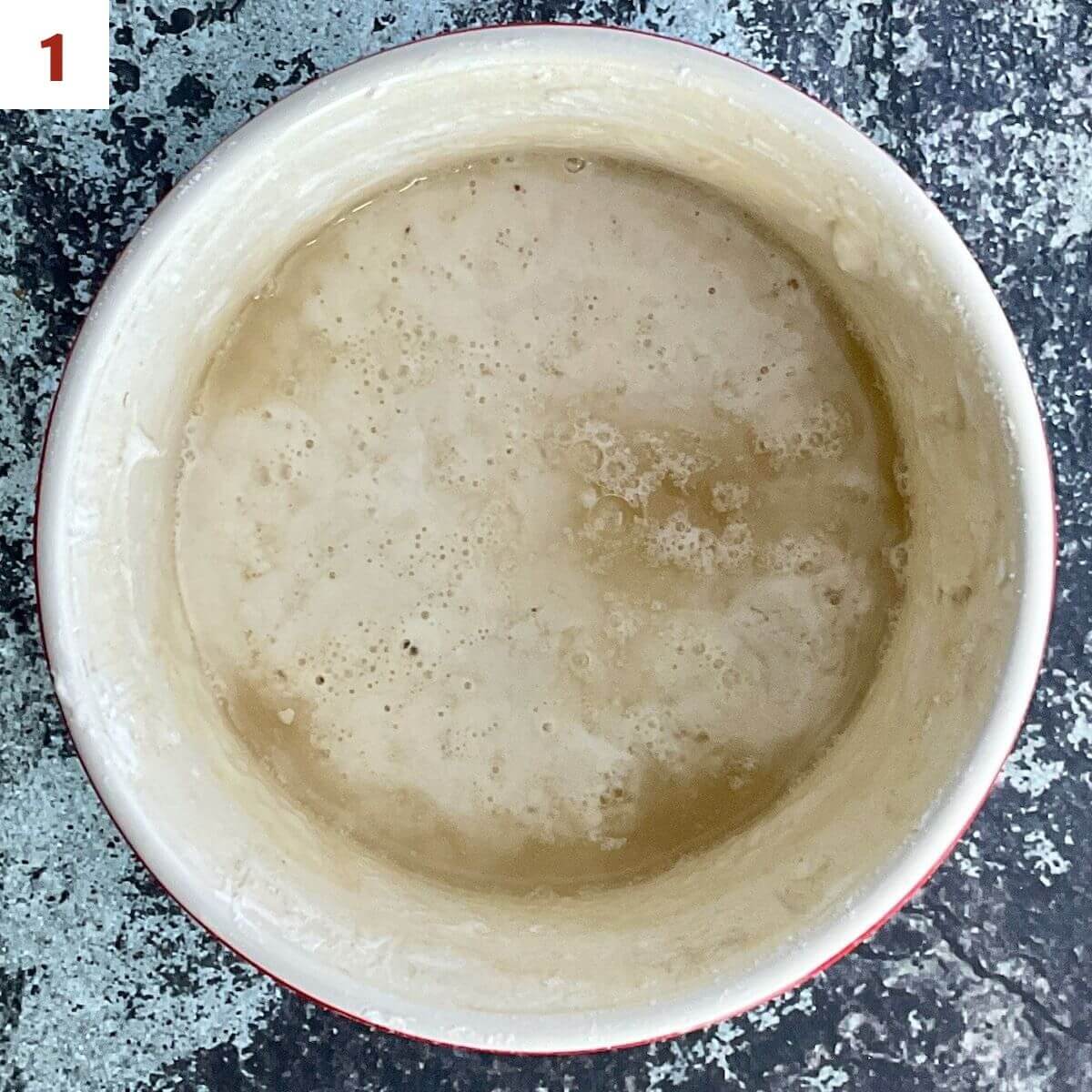
Place a 2-cup container on a kitchen scale and remove 1 cup (227 grams) of the unfed sourdough starter (aka sourdough starter discard) from your starter container (photo 2).
If you like to reuse the discard, loosely cover it and set it aside. Otherwise, you can share it with a friend or throw it away.
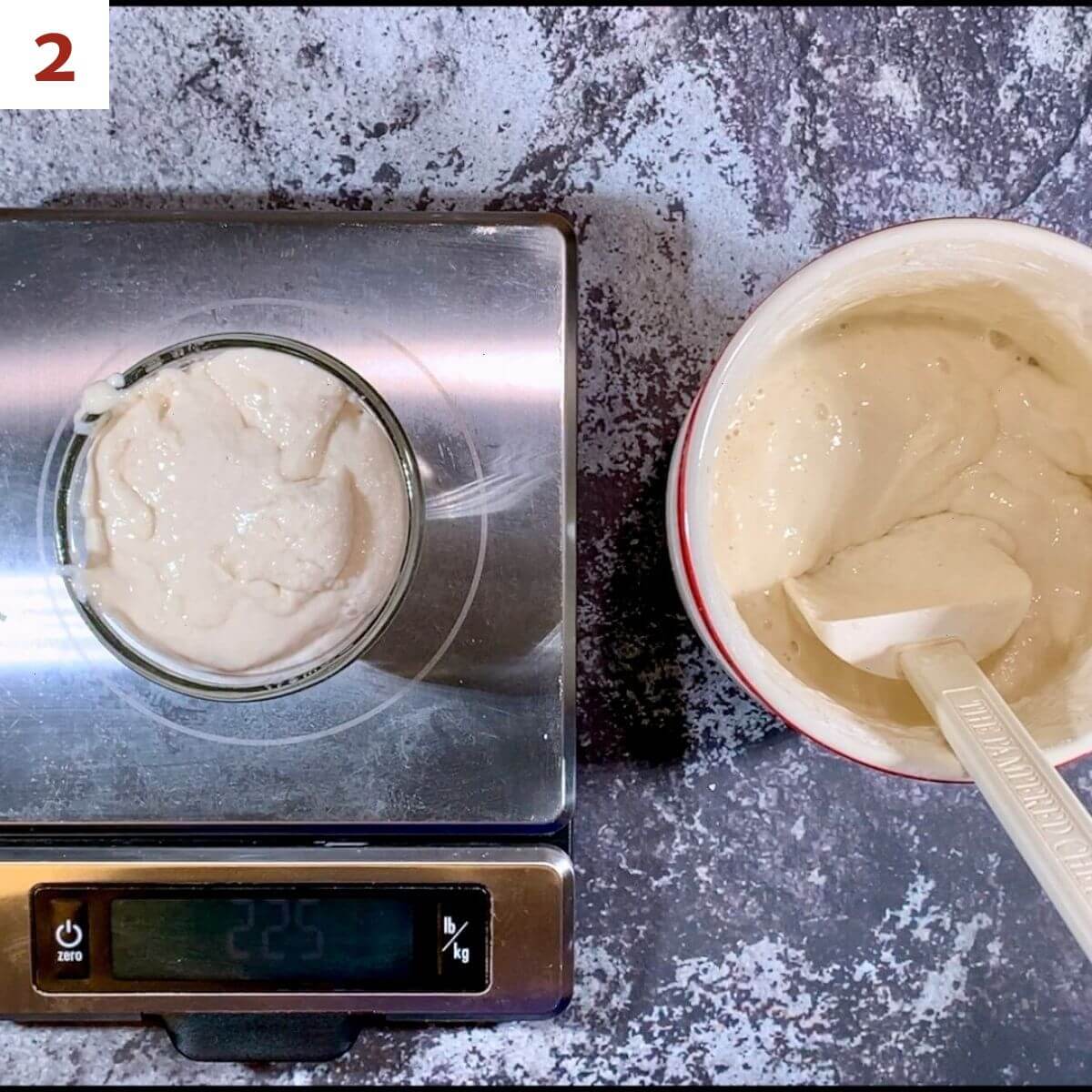
Step 2: Add flour to the starter container
Place the starter container on the scale. Measure 1 scant cup (113 grams) of all-purpose flour and add it to the starter (photo 3).
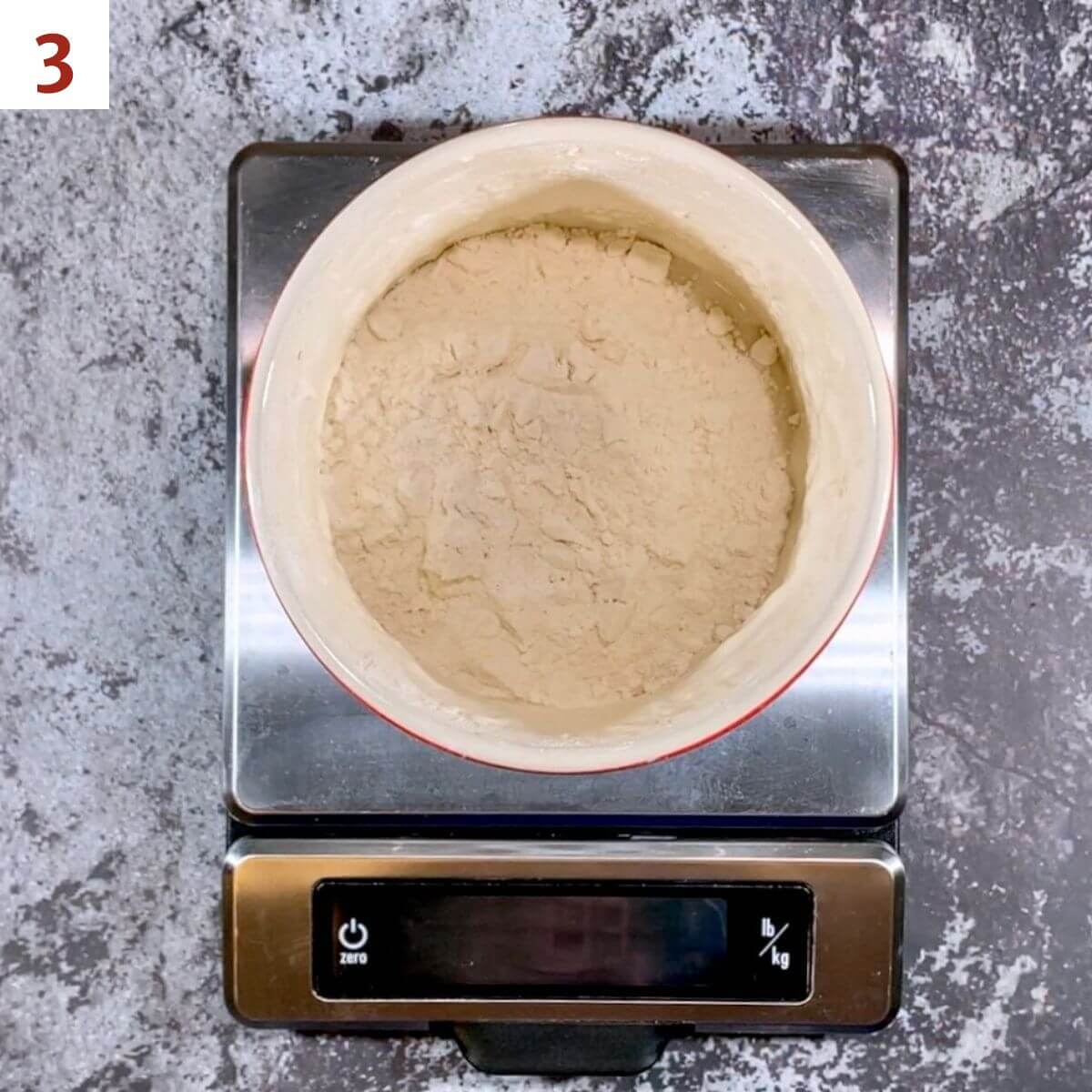
Step 3: Add water to the starter container
Warm the water in a microwave-safe measuring cup for 30 seconds or until it's warmed to 100 to 115°F as read on a digital thermometer (photo 4).
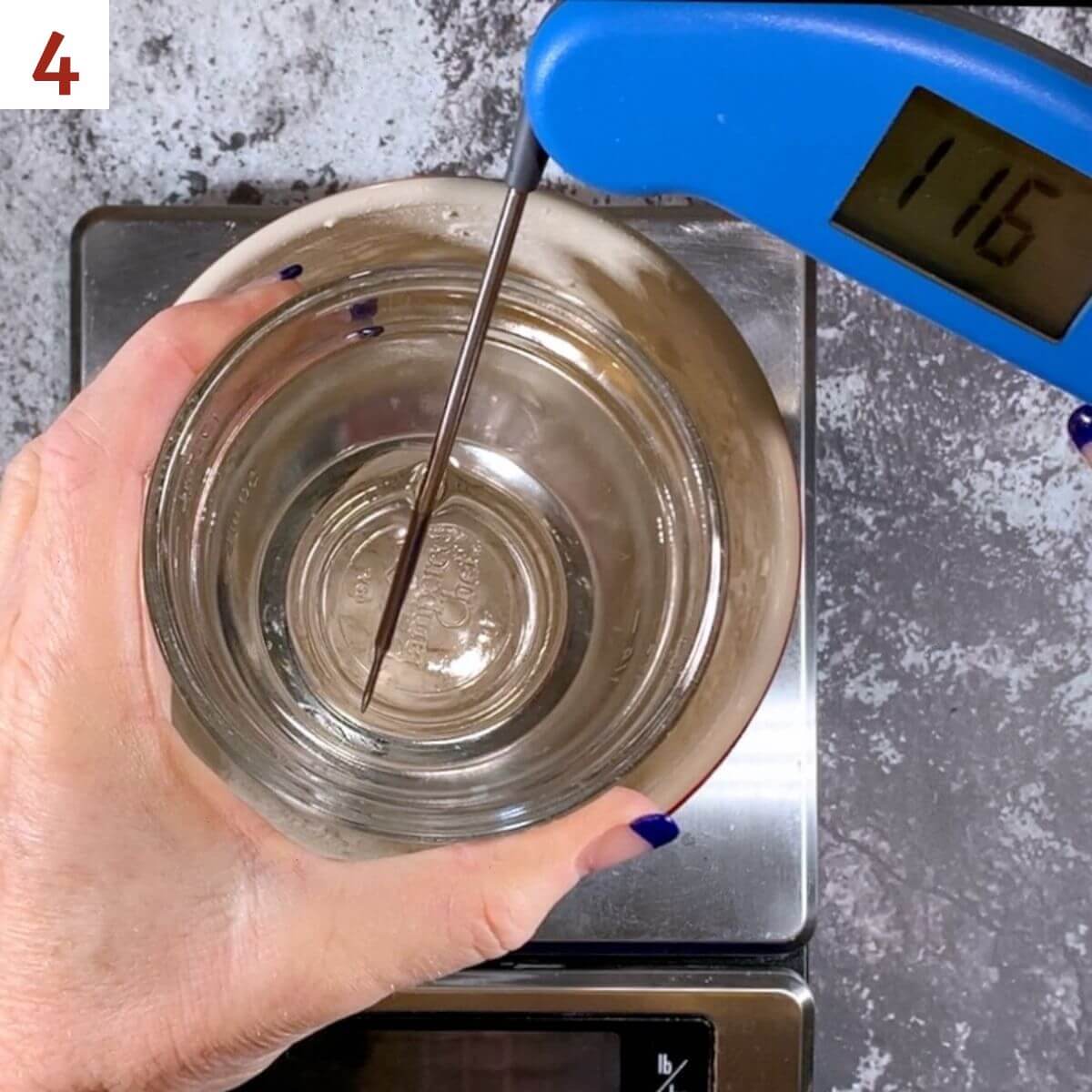
Measure ½ cup (113 grams) of water and add it to the starter (photo 5).
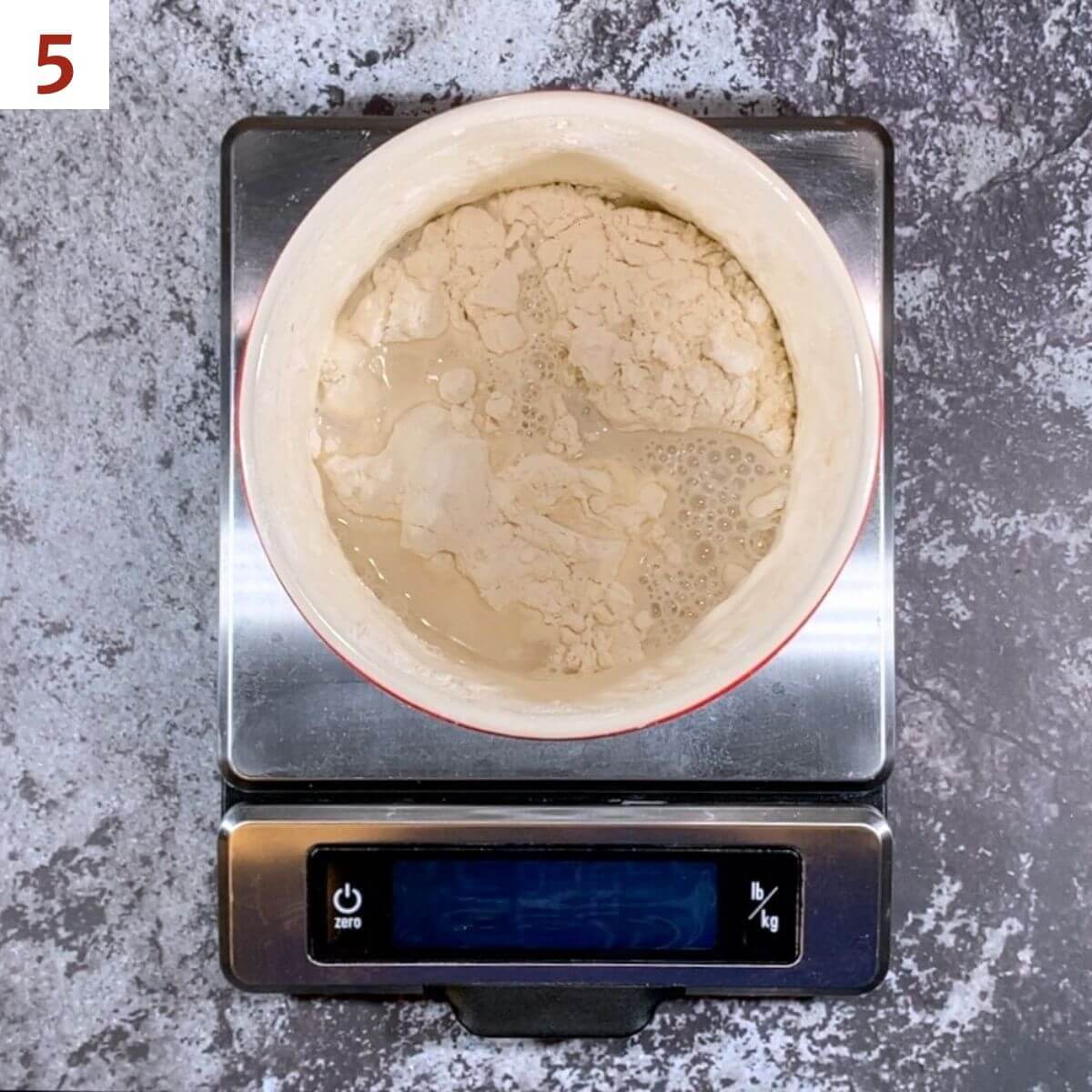
Step 4: Allow the starter to rest
Stir the starter well, the cover the container and set it aside on the counter. Allow the starter to rest at room temperature (about 70°F) for 2 to 4 hours, or until it's bubbly with a nice yeasty smell and has risen up in the container (photo 6). This means the yeast is active and ready to use.
At this point you have a fed sourdough starter. If you're going to bake with the starter now, remove the amount you need and repeat the feeding process to replace what you've just taken.
If you're not going to use the starter now, just return the starter container to the refrigerator (if that's where it's kept) until the next feeding time.
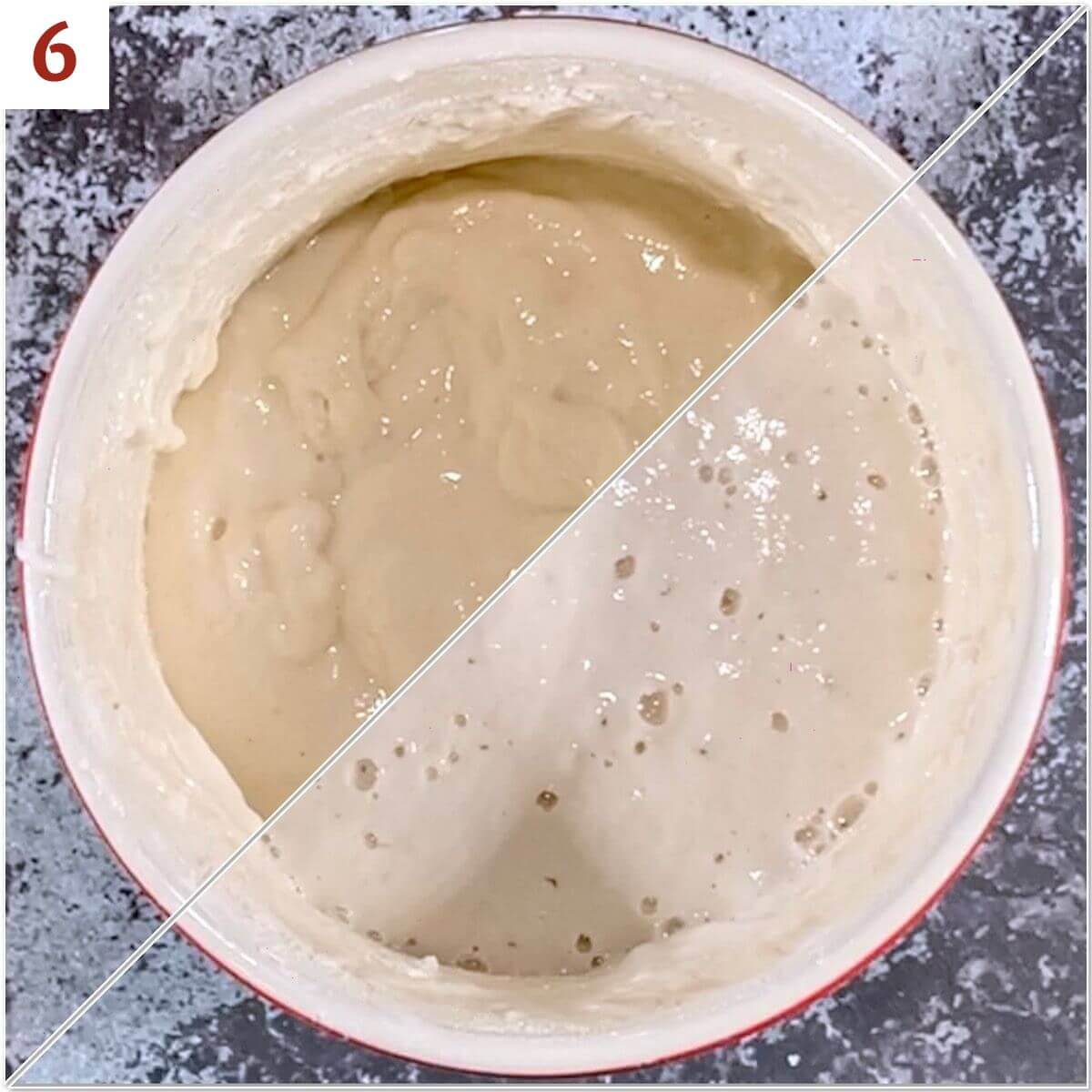
What to do with sourdough starter discard
You'll notice that the first thing you do when feeding starter is that you remove some. Why?
Well, if you don't, the starter will grow to the point it will take over a small city.
The starter that you remove before feeding is the "unfed sourdough starter." Some people choose to throw it away (hence the term "discard"). I don’t like to waste anything, and this is where creativity comes in to it.
I've developed many ideas that use the unfed starter, like bagels, pretzels, shortcrust pastry, rye bread, crumpets, and pizza dough. Plus there are sweet pastries like pumpkin cake, banana bread, spice cake, and the aforementioned gingerbread (pictured below).
Or, simply give your discard to a friend so they can create their own starter!
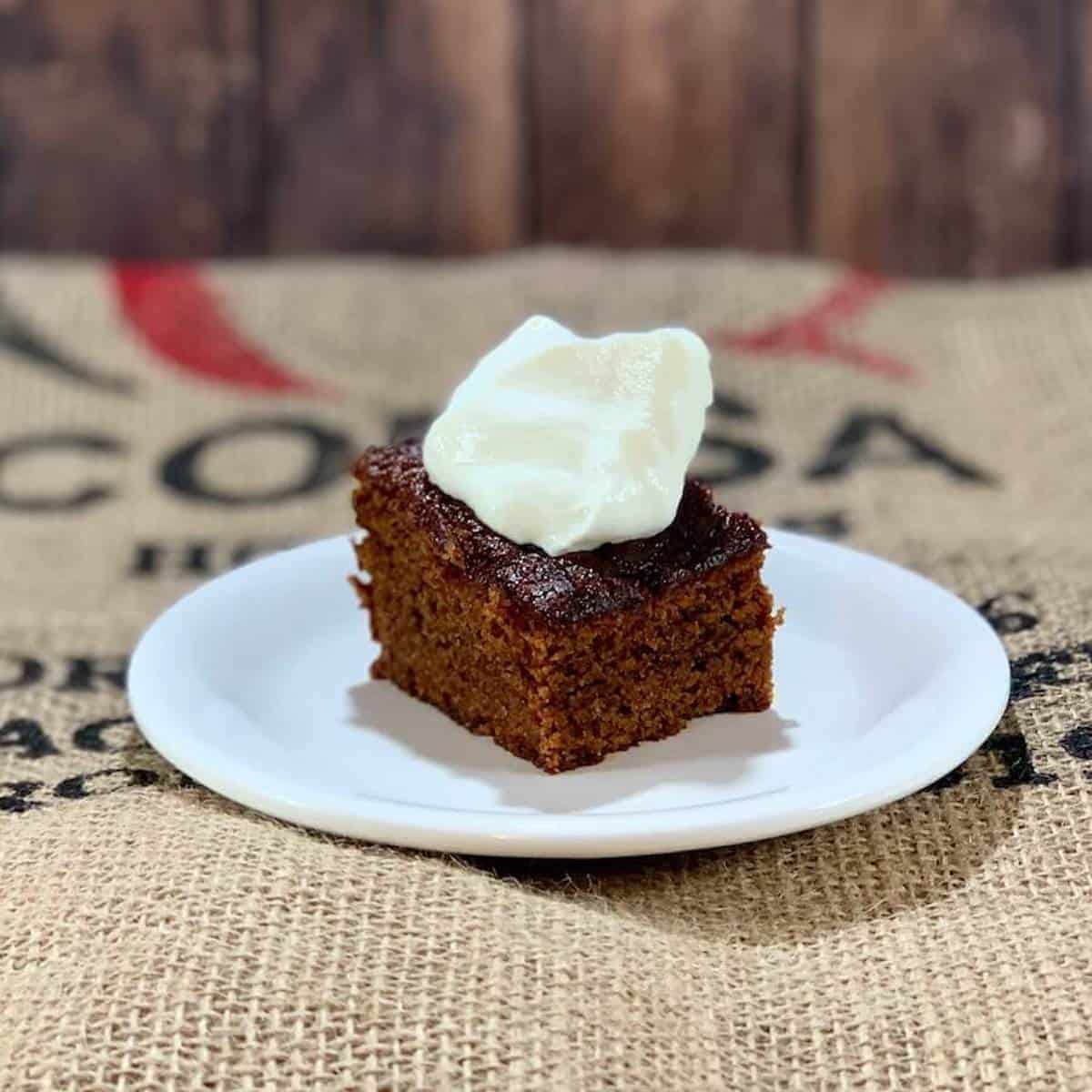
Further reading about sourdough
I've only covered the basics of maintaining a healthy sourdough starter for baking sourdough bread, but there's so much more to know.
I love King Arthur Baking as a resource, and they have a wonderful Sourdough Baking Guide that goes into much more depth than I have here. Peruse at your leisure.
Sourdough starter does require some love and attention, but you will be rewarded with baked goods that reflect your unique baking style and environment.
Welcome to the wonderful world of sourdough!
Questions asked and answered
Here are some other questions that you might have...
Sourdough starter can be a mother (i.e. freshly created) or a child (the discard from an established colony). Indeed, some starters available today are descended from a starter more than a century old!
You can get your starter from a friend, a reputable company like King Arthur Baking, or start some yourself.
I use a crock for my starter. It keeps the starter protected and it's sturdy for all the stirring you do in it. An airtight plastic bin also works well. Just make sure that whatever vessel you use, it has enough room in it for the starter to get active and bubbly after it's been fed.
If you keep your starter in the refrigerator, you can get away with missing a week or maybe even two, but not much longer than that. When you do feed it again, add the flour and water once, let it get bubbly on the counter for 4 hours, then discard some and feed it again. Allow the starter to get bubbly once more, then you can refrigerate it knowing that the yeast is well and truly alive and active.
You can use the sourdough starter discard as you normally would.
Normal, active starter will have a yeasty or even pungent smell. That just means it needs to be fed. If it's been kept in the refrigerator for a while, you might notice that there may be a bit of light amber or clear liquid on top. This is alcohol from the fermenting yeast, and is perfectly fine.
If you notice a strong, moldy or off-putting smell (like something rotten), or it has a pink or orange tint or streak, this is a sure sign that your sourdough starter has died. Don't use it! Just throw it away and get a new batch of starter. And be a little more attentive next time.
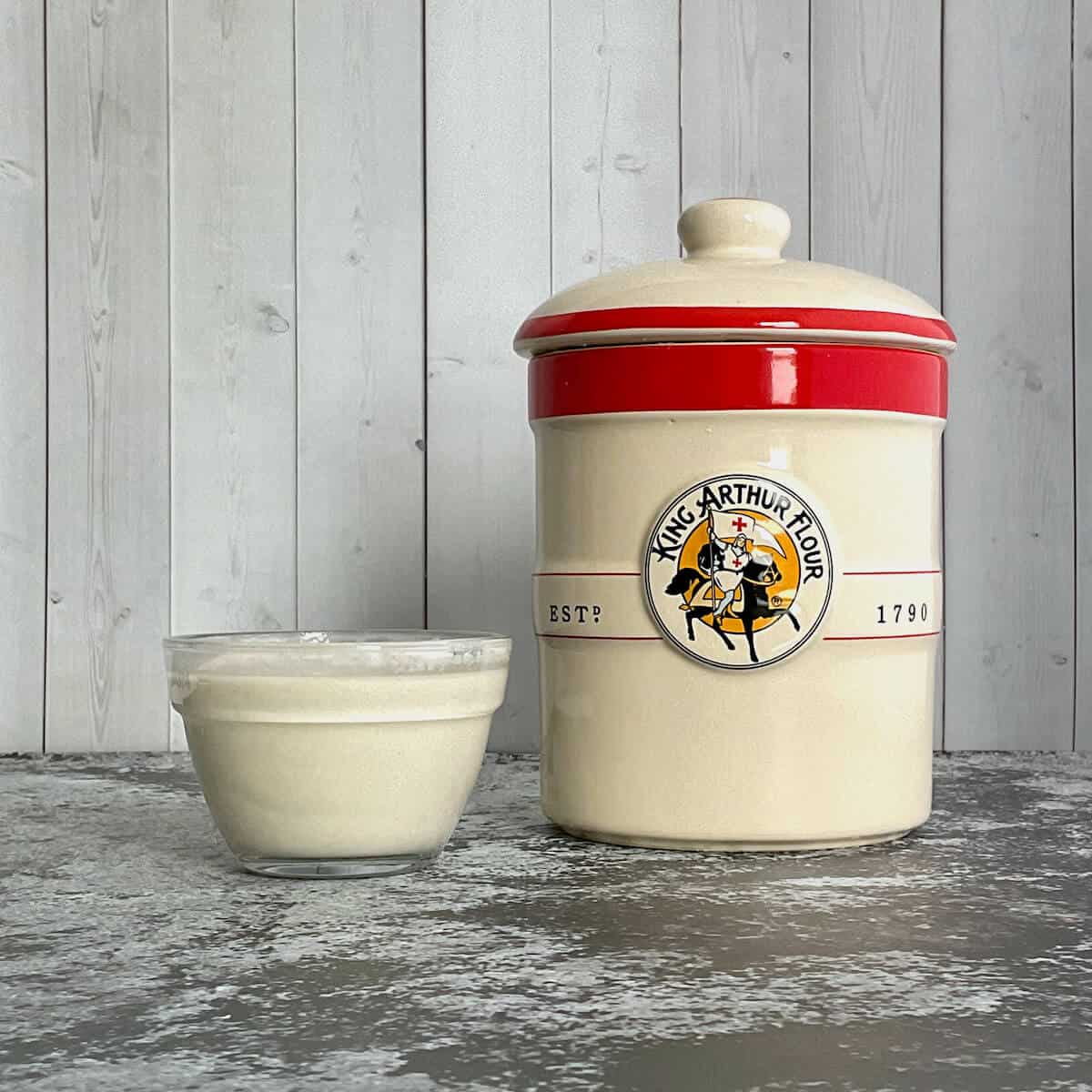
More recipes featuring sourdough discard to try
Recipe
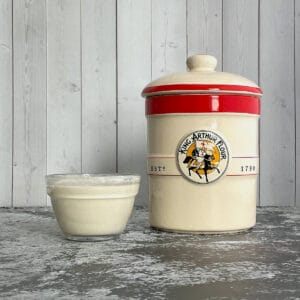
How to Feed Sourdough Starter
Equipment
Ingredients
- 2 cups sourdough starter, unfed, chilled or at room temperature
- 1 scant cup all-purpose flour, see Recipe Notes
- ½ cup water, warmed to 100 to 120°F
Instructions
- Remove the unfed sourdough starter container from the refrigerator if that's where it's kept. There may be a bit of light amber or clear liquid on top. Stir it back in to the starter or drain it off, your choice. Either way, it’s alcohol from the fermenting yeast and is perfectly fine.
- If you notice a strong, moldy or off-putting smell (like something rotten), or it has a pink or orange tint or streak, this is a sure sign that your sourdough starter has died. Don't use it! Just throw it away and get a new batch of sourdough starter.
- Place a 2-cup container on a kitchen scale and remove 1 cup (227 grams) of the unfed sourdough starter from your starter container. This is the unfed sourdough starter (aka sourdough starter discard). If you like to reuse the discard, loosely cover it and set it aside. Otherwise, you can share it with a friend or throw it away.
- Place the starter container on the scale. Measure 1 scant cup (113 grams) of all-purpose flour (see Recipe Notes) and add it to the starter.
- Warm the water in a microwave-safe measuring cup for 30 seconds or until it's warmed to 100 °F to 115 °F as read on a digital thermometer. Measure ½ cup (113 grams) of water and add it to the starter.
- Stir the starter well. Cover the starter container and set it aside on the counter.
- Allow the starter to rest at room temperature (about 70 °F) for 2 to 4 hours, or until it's bubbly with a nice yeasty smell and has risen up in the container. This means the yeast is active and ready to use.
- At this point you have a fed sourdough starter. If you're going to bake with the starter now, remove the amount you need and repeat the feeding process to replace what you've just taken. If you're not going to use the starter now, just return the starter container to the refrigerator (if that's where it's kept) until the next feeding time.
- You can bake with the sourdough discard now or return it to the refrigerator for future use.

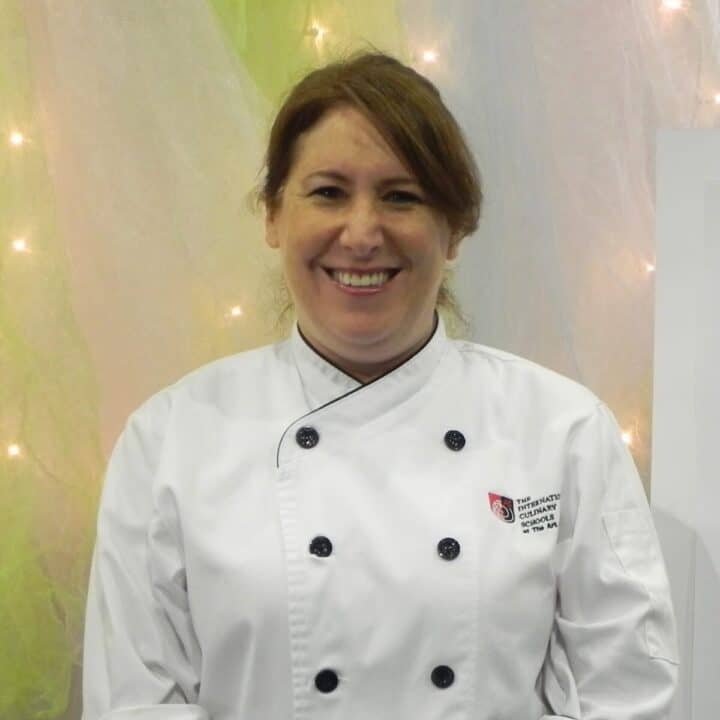
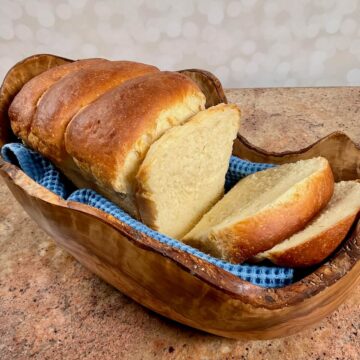
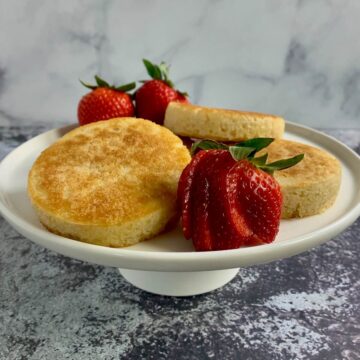

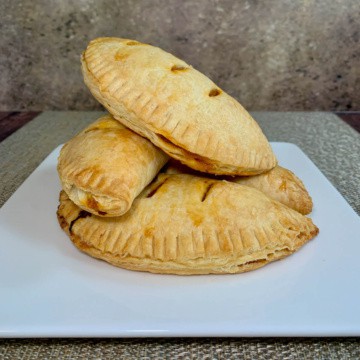
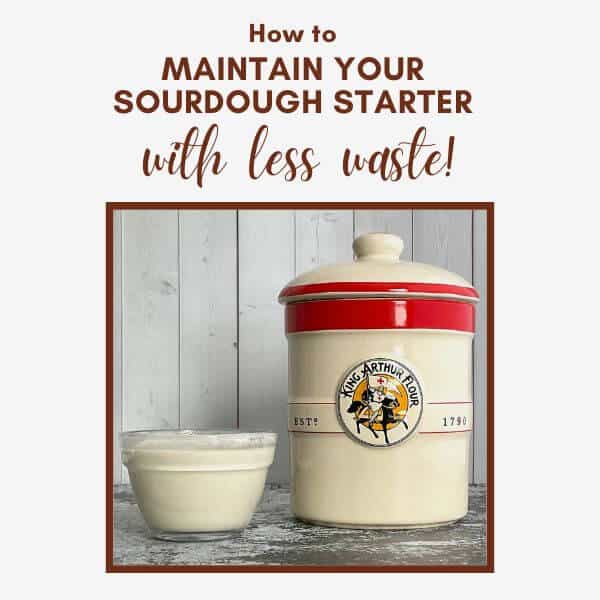
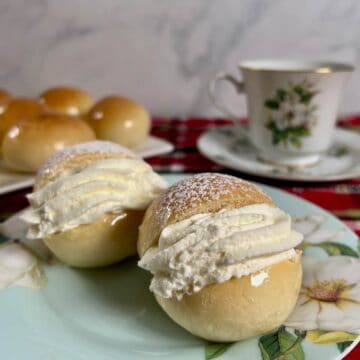
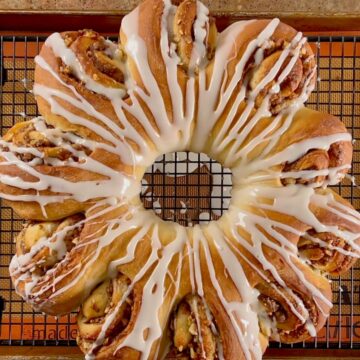
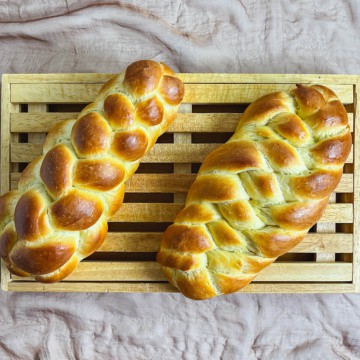
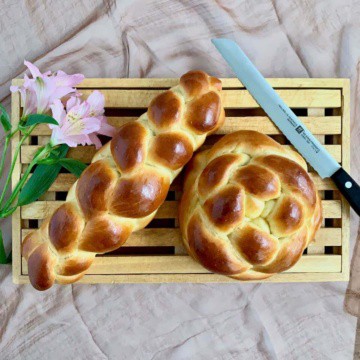


Kathleen Halvorsen says
Can you tell me where you can find the crockpot bowls?
Tammy Spencer says
Hi Kathleen, If you're referring to the crock I use to store my sourdough starter, I originally purchased it from King Arthur Baking (note: this isn't an affiliate link). You can use glass jars that have a flip-top lid or a screw-on top as well. Good luck, and happy sourdough baking! 🙂
Mimsy says
thanks for your help. I’m going to go look at the color of the liquid in my starter now and see if I’m good or bad.
Tammy Spencer says
Hi Mimsy, Glad I could help. Happy baking! 😉
Sharon says
What is the bread recipe for the first picture of bread posted in this article of maintaining the starter?
Tammy Spencer says
Hi Sharon, thanks for your question! That is my Extra Tangy Sourdough Bread recipe, the one that just uses fed starter and no commercial yeast. I'll be offering that recipe as a free download quite soon, so check back here if you're interested in receiving it.
John Lorenz says
#1- The book that came with my scale says unsifted flour weight 4 oz. Unsifted is 5 oz. This is what I use. You say 4 1/4 oz./cup. In your recipes (trying the English muffins now) you give volume, but do you actually use weight?
#2- On maintaining starter, why do you (and most others) insist on discarding before feeding? Why not feed it less amounts if kept in the fridge? I have been maintaining mine using this method for over a year. If not pulling some out to use, I will add 25 Grams of unbleached/unbromated bread flour and equal parts water weekly. I use the starter maybe 2 times a month. Yeast will go dormant if there is a lack of food, at least for a time. I read online how to keep it for 3 weeks in the fridge and it came out perfect upon our return from vacation.
Tammy Spencer says
Hi John, good questions all.
(1) For the weight of flour, I use the Ingredient Weight Chart from King Arthur Baking: 1 cup = 4 1/4 ounces = 120 grams. All my recipes have units given in volume (US Customary) and grams (Metric) - you can toggle between the two as needed. I have more detail about the hows and whys recipe ingredients are given in US Customary and metric weight units in my Ingredient Measurement Unit Policy.
(2) I know that there are various schools of thought regarding whether or not to discard starter when feeding, how often to feed, or indeed how much flour/water to feed it. I use the sourdough starter instructions that came with my starter (again, from King Arthur Baking). I will say that lately I've been keeping 150 grams of starter in a jar in my refrigerator, and my weekly discard of 100 grams is replaced by 50 grams each of flour and water. When I want to bake, I give the starter cycles of feed/discard over a day or two to reanimate it, then increase the amounts as needed for the recipe.
Thanks for your questions, and Happy Baking!
Wendy says
I can use all the information I can find!
Tammy Spencer says
Happy baking!
Sally says
Thank you for keeping it simple
Tammy Spencer says
You're welcome!